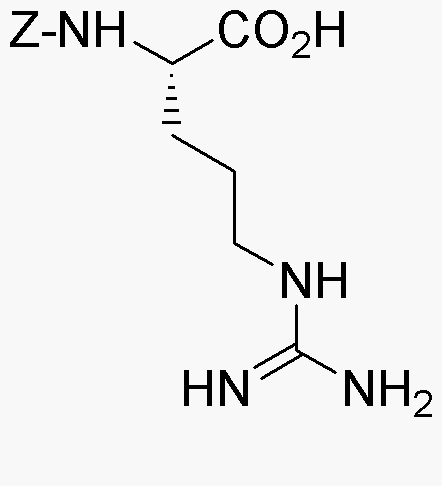Z-L-arginine is widely utilized in research focused on:
- Biochemical Research: It serves as a substrate for nitric oxide synthase, making it essential in studies related to cardiovascular health and cellular signaling.
- Pharmaceutical Development: This compound is used in the formulation of supplements aimed at enhancing athletic performance and recovery due to its role in protein synthesis and blood flow improvement.
- Cosmetic Industry: Z-L-arginine is incorporated into skincare products for its moisturizing properties and ability to promote wound healing, benefiting those with sensitive skin.
- Food Industry: It is added to dietary supplements and functional foods to support immune function and overall health, appealing to health-conscious consumers.
- Veterinary Medicine: The compound is utilized in animal health products to improve growth rates and feed efficiency in livestock, addressing the needs of farmers and animal nutritionists.
General Information
Properties
Safety and Regulations
Applications
Z-L-arginine is widely utilized in research focused on:
- Biochemical Research: It serves as a substrate for nitric oxide synthase, making it essential in studies related to cardiovascular health and cellular signaling.
- Pharmaceutical Development: This compound is used in the formulation of supplements aimed at enhancing athletic performance and recovery due to its role in protein synthesis and blood flow improvement.
- Cosmetic Industry: Z-L-arginine is incorporated into skincare products for its moisturizing properties and ability to promote wound healing, benefiting those with sensitive skin.
- Food Industry: It is added to dietary supplements and functional foods to support immune function and overall health, appealing to health-conscious consumers.
- Veterinary Medicine: The compound is utilized in animal health products to improve growth rates and feed efficiency in livestock, addressing the needs of farmers and animal nutritionists.
Documents
Safety Data Sheets (SDS)
The SDS provides comprehensive safety information on handling, storage, and disposal of the product.
Product Specification (PS)
The PS provides a comprehensive breakdown of the product’s properties, including chemical composition, physical state, purity, and storage requirements. It also details acceptable quality ranges and the product's intended applications.
Certificates of Analysis (COA)
Search for Certificates of Analysis (COA) by entering the products Lot Number. Lot and Batch Numbers can be found on a product’s label following the words ‘Lot’ or ‘Batch’.
*Catalog Number
*Lot Number
Certificates Of Origin (COO)
This COO confirms the country where the product was manufactured, and also details the materials and components used in it and whether it is derived from natural, synthetic, or other specific sources. This certificate may be required for customs, trade, and regulatory compliance.
*Catalog Number
*Lot Number
Safety Data Sheets (SDS)
The SDS provides comprehensive safety information on handling, storage, and disposal of the product.
DownloadProduct Specification (PS)
The PS provides a comprehensive breakdown of the product’s properties, including chemical composition, physical state, purity, and storage requirements. It also details acceptable quality ranges and the product's intended applications.
DownloadCertificates of Analysis (COA)
Search for Certificates of Analysis (COA) by entering the products Lot Number. Lot and Batch Numbers can be found on a product’s label following the words ‘Lot’ or ‘Batch’.
*Catalog Number
*Lot Number
Certificates Of Origin (COO)
This COO confirms the country where the product was manufactured, and also details the materials and components used in it and whether it is derived from natural, synthetic, or other specific sources. This certificate may be required for customs, trade, and regulatory compliance.


